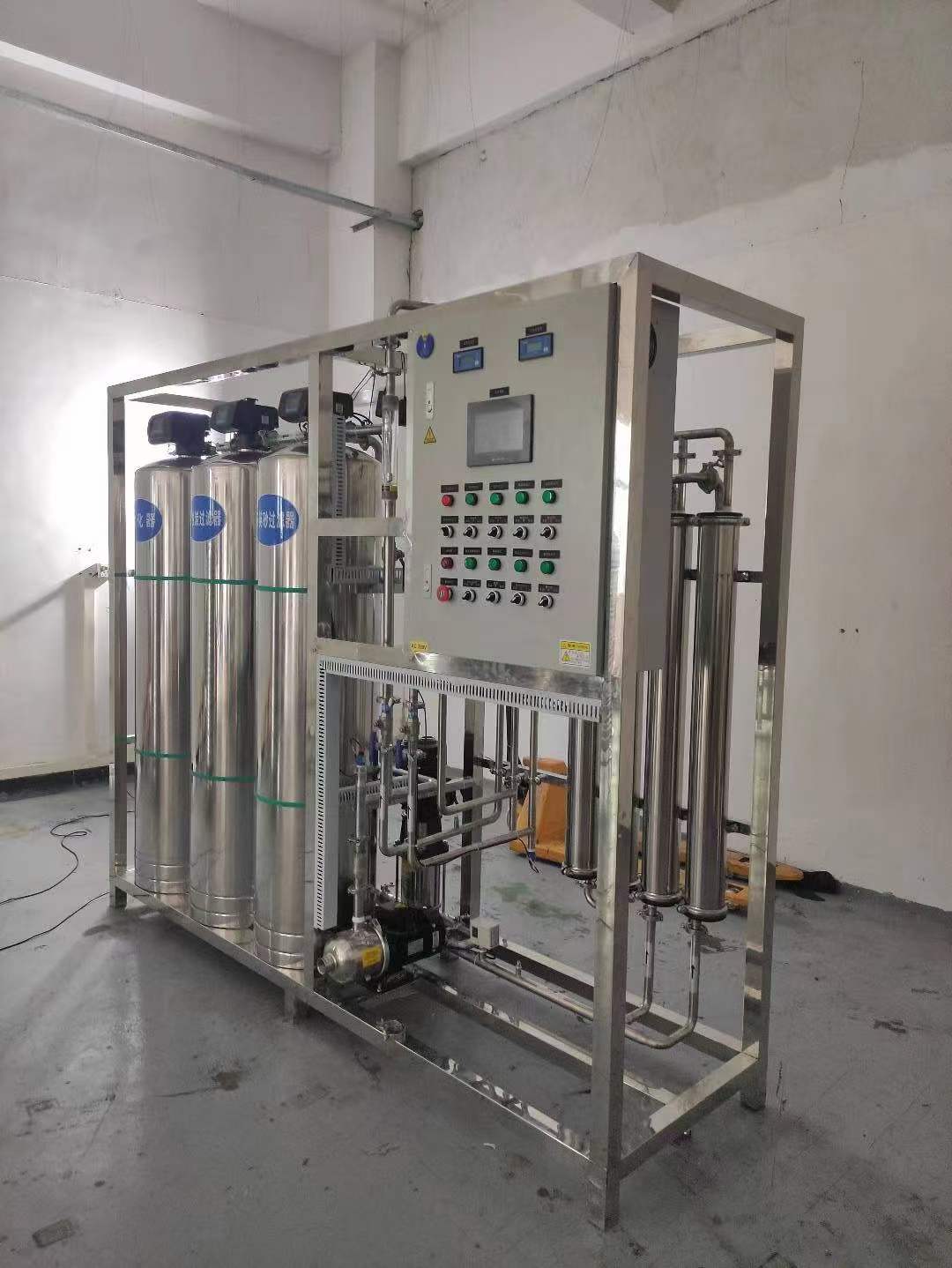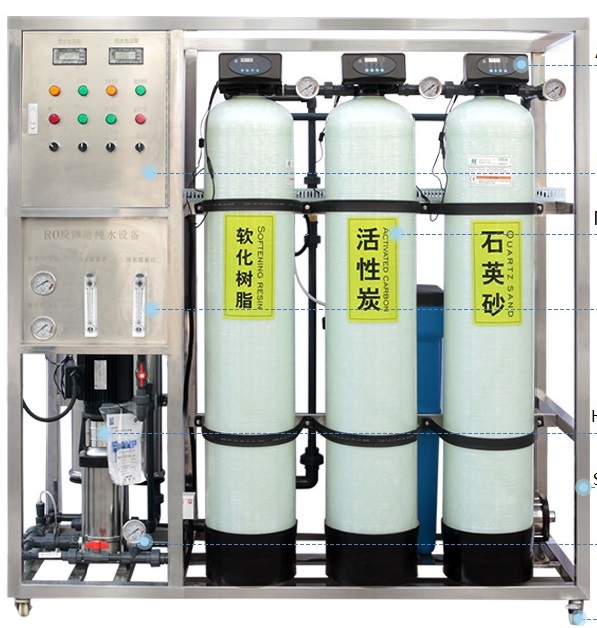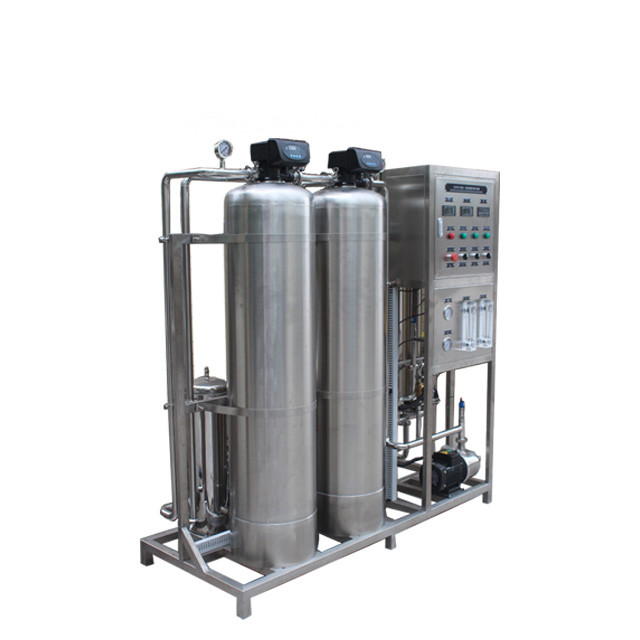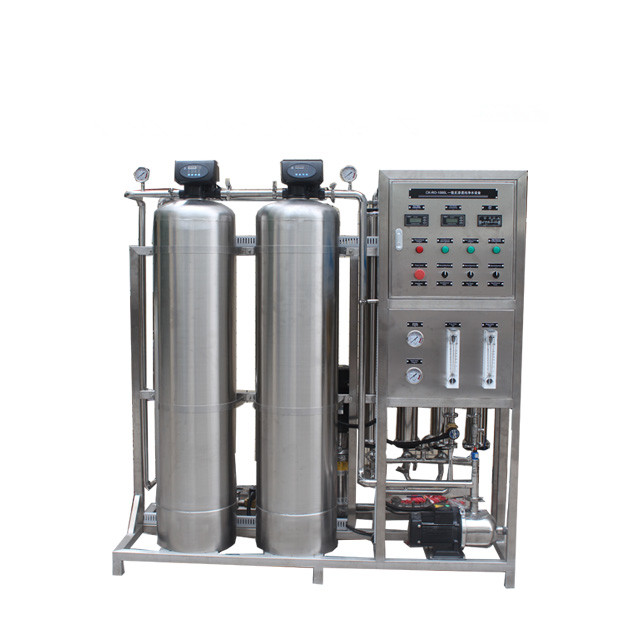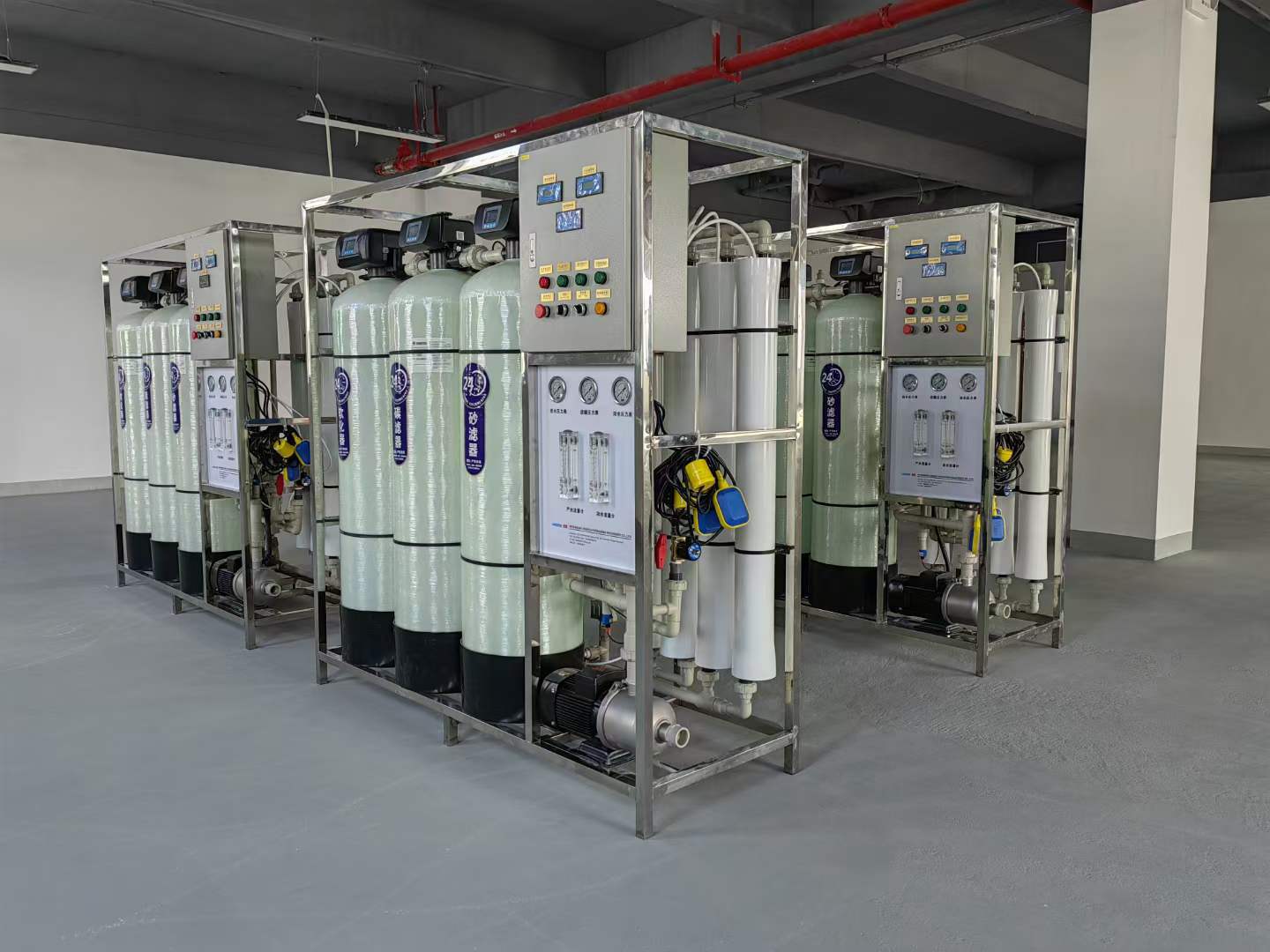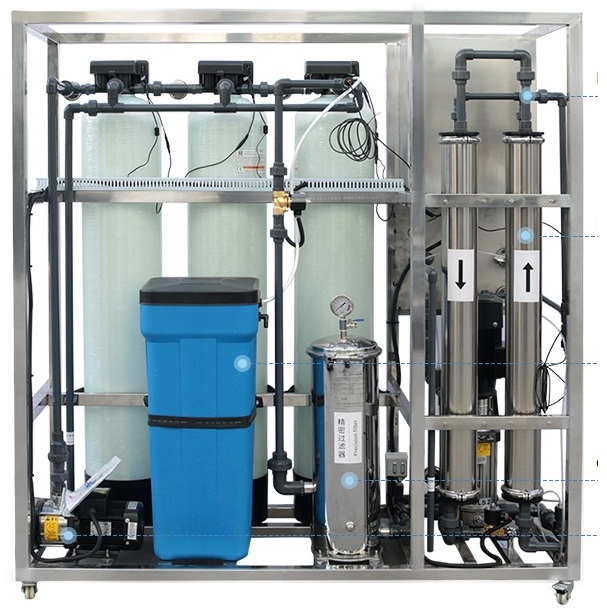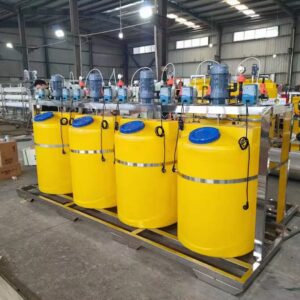 STARK Abwasseraufbereitungsanlage Salzwasseranlage Chemische Wasserumkehrosmoseanlage
STARK Abwasseraufbereitungsanlage Salzwasseranlage Chemische Wasserumkehrosmoseanlage STARK Abwasseraufbereitungsanlage Salzwasseranlage Chemische Wasserumkehrosmoseanlage
Address complex wastewater challenges with Stark Water’s STARK Sewage Water Treatment Plant. This comprehensive plant is expertly designed as **saltwater equipment** and integrates a Chemical Water Reverse Osmosis System for advanced purification, ensuring environmental compliance and enabling water reuse from diverse sewage sources.
Beschreibung des Produkts
Effective and environmentally responsible management of wastewater is a critical global challenge, particularly as industrial processes generate increasingly complex effluents, sometimes with high salinity. The Stark Water STARK Sewage Water Treatment Plant is engineered as a comprehensive and highly adaptable solution to address these diverse wastewater streams. This advanced plant is designed to purify municipal sewage and various industrial wastewaters, including those with significant salt content, ensuring stringent discharge regulations are met and enabling valuable water reuse.
Comprehensive Sewage Water Treatment Plant Design
Unser sewage water treatment plant is typically designed as a multi-stage system, tailored to the specific characteristics of the influent wastewater and the desired effluent quality. The comprehensive process often includes:
- Primary Treatment: Physical separation of large solids and grit (e.g., screening, grit removal, primary clarification).
- Secondary Treatment: Biological processes (e.g., activated sludge, MBR, trickling filters) to remove dissolved and suspended organic matter.
- Tertiary/Advanced Treatment: Further purification steps to remove specific pollutants, nutrients (nitrogen, phosphorus), and trace contaminants. This is where advanced technologies become crucial.
- Disinfection: Final step to eliminate pathogens before discharge or reuse.
This integrated approach ensures maximum contaminant removal, converting challenging wastewater into clean, safe effluent.
Specialized for Saltwater Equipment & Chemical Water Reverse Osmosis System Integration
A key differentiator of the STARK Sewage Water Treatment Plant is its specialized capability as **saltwater equipment**. Many industrial processes (e.g., food processing, oil & gas, textiles, or those using brines) produce saline wastewater that is difficult for conventional biological treatment alone. Our plant can integrate specialized components and processes suitable for high-salinity effluents, including robust biological systems tolerant to salt, and corrosion-resistant materials for all equipment. Furthermore, the inclusion of a Chemical Water Reverse Osmosis System is pivotal for advanced purification, especially when dealing with recalcitrant pollutants or aiming for high-quality reuse. RO acts as a powerful tertiary treatment step, effectively removing remaining dissolved solids, trace organics, heavy metals, and pathogens that biological processes might miss. Chemical dosing is often part of the pre-treatment for RO (e.g., anti-scalant, pH adjustment) or for overall plant optimization (e.g., flocculants, coagulants, disinfection chemicals), making it a truly comprehensive “Chemical Water” treatment solution.
Environmental Compliance and Water Reuse Enablement
By effectively treating complex wastewater streams, our **sewage water treatment plant** ensures strict adherence to environmental discharge regulations, helping industries avoid penalties and improve their environmental footprint. Beyond mere compliance, the integration of advanced technologies like Reverse Osmosis facilitates the production of high-quality effluent suitable for various water reuse applications. This can include irrigation, industrial process water, cooling tower make-up water, or even indirect potable reuse, contributing significantly to water conservation and resource sustainability in regions facing water scarcity.
Produkt-Parameter
| Parameter | Spezifikation / Anpassungsoptionen |
|---|---|
| Hauptschlüsselwort Fokus | Sewage water treatment plant Design und Fähigkeiten. |
| Treatment Capacity | Customizable based on influent flow rate (e.g., from 1 m³/day to 10,000+ m³/day). |
| Influent Water Source | Municipal Sewage, Industrial Wastewater (various types, including high salinity/brackish industrial wastewater). |
| Treatment Stages |
|
| Key Technologies Integrated | Biological Processes, Membrane Filtration (UF/MBR/RO), Chemical Dosing, Disinfection, Sludge Management. |
| Effluent Quality Parameters (Typical Reduction) |
|
| RO System Integration | Custom-designed Chemical Water Reverse Osmosis System for final polishing of effluent (especially for saline wastewater or high reuse standards). |
| Saltwater Compatibility | Designed as saltwater equipment with corrosion-resistant materials (e.g., Duplex SS, specific plastics) and salt-tolerant biological processes where needed. |
| Kontrollsystem | Fully Automatic PLC Control with HMI, real-time monitoring of flow, pressure, pH, ORP, DO, turbidity, and online effluent quality. Automated backwash, sludge handling, and chemical dosing. Remote control capability. |
| Stromversorgung | 3 Phasen, 380V/415V/460V, 50Hz/60Hz (anpassbar). |
| Baumaterial |
|
| Einhaltung der Vorschriften | Designed to meet specific local and international discharge standards (e.g., EPA, WHO, local environmental regulations). |
| Water Reuse Potential | High (depending on final treatment stages), for industrial process water, irrigation, cooling tower make-up. |
Anwendbare Industrie
- Municipal Wastewater Treatment: For purifying urban sewage from towns and cities, ensuring compliance with environmental discharge standards and potentially enabling treated water reuse for irrigation or other non-potable uses.
- Industrial Wastewater Treatment: Essential for managing and treating effluents from various manufacturing processes including:
- Essen & Trinken: Treating high-BOD wastewater from dairies, breweries, slaughterhouses, and food processing plants.
- Textile & Dyeing: Removing color, organic pollutants, and heavy metals from dyeing wastewater.
- Pharmaceutical & Chemical: Treating complex effluents containing organic compounds, salts, and specific pollutants.
- Pulp & Paper: Managing high-volume wastewater with suspended solids and organic load.
- Oil & Gas: Treating produced water, fracking wastewater, and other process effluents, often with high salinity, leveraging specialized saltwater equipment.
- Mining & Metals: Managing acid mine drainage and other process wastewaters, often requiring heavy metal removal and pH adjustment.
- Stromerzeugung: Treating wastewater from plant operations (e.g., boiler blowdown, cooling tower blowdown) and potentially flue gas desulfurization (FGD) wastewater.
- Hotels & Resorts: On-site treatment of sewage and greywater, particularly in remote locations or islands, enabling safe discharge or reuse for landscaping.
- Commercial Complexes & Large Institutions: Providing independent wastewater treatment for large office parks, shopping centers, or universities where connection to municipal systems is difficult or expensive.
- Water Reuse & Recycling Projects: As a core component for producing high-quality reclaimed water for industrial processes, agricultural irrigation, or aquifer recharge, by integrating advanced purification technologies like the Chemical Water Reverse Osmosis System.
Vorteil Eins
Vorteil ZWEI
Verwandte Produkte
Ähnliche Produkte
FAQ
F1: Wie lange hält die Umkehrosmoseanlage?
Die Lebensdauer einer Umkehrosmoseanlage hängt von der Wasserqualität und der Wartung ab. In der Regel hält die Membran 2-3 Jahre, während das System selbst bei richtiger Pflege über 10 Jahre halten kann.
F2: Kann das System an die unterschiedlichen Wasserbedingungen angepasst werden?
Ja, alle unsere Systeme sind vollständig anpassbar. Wir analysieren Ihren Wasserbericht und Ihren Anwendungsbedarf, bevor wir maßgeschneiderte Lösungen anbieten.
F3: Welche Normen erfüllen die STARK Geräte?
Unsere Produkte sind CE- und ISO 9001-konform und können auf Wunsch so gestaltet werden, dass sie spezifischen regionalen Vorschriften oder Industrienormen entsprechen.
F4: Wie lange ist die Lieferzeit für STARK RO Systeme?
Standardsysteme werden innerhalb von 7-15 Tagen ausgeliefert. Bei kundenspezifischen Aufträgen kann sich die Lieferzeit je nach Komplexität auf 20-25 Tage verlängern.
F5: Bieten Sie technische Unterstützung oder Installationshilfen an?
Ja. Wir bieten eine vollständige technische Dokumentation, eine Fernanleitung per Video und können auf Wunsch Techniker ins Ausland schicken.
F6: Was ist in Ihrem Angebot enthalten?
Unser Angebot umfasst die komplette Umkehrosmoseanlage, die Schalttafel, die Pumpen, die Vorbehandlungseinheiten und alle erforderlichen Armaturen. Installationswerkzeuge und Ersatzteile können auf Anfrage mitgeliefert werden.

